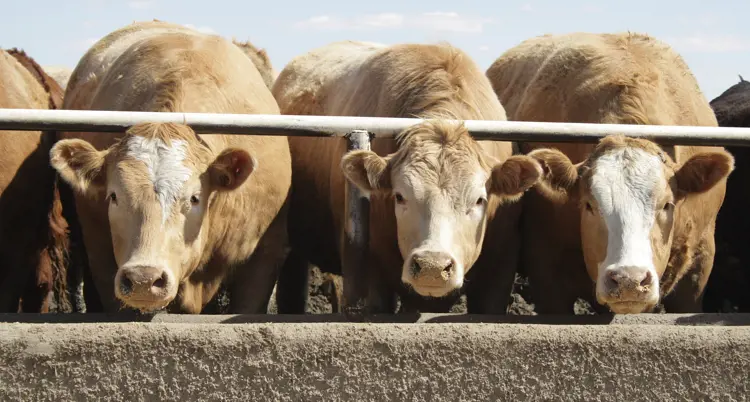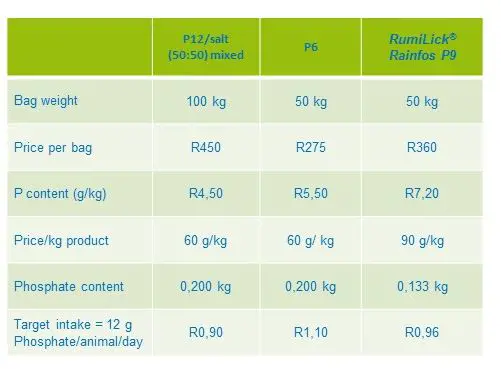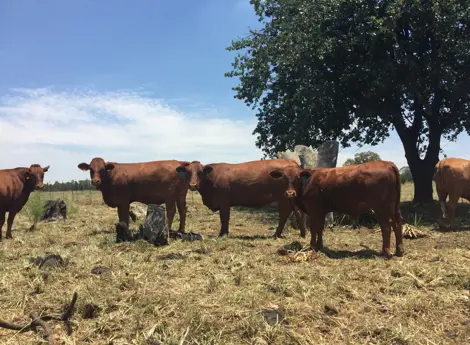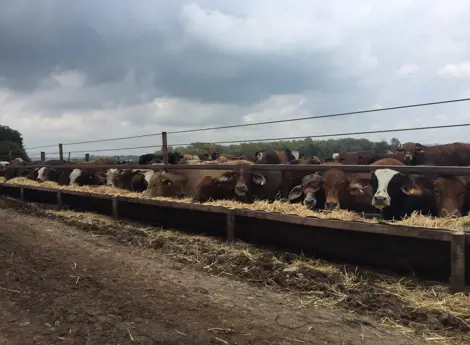
More than 80% of the phosphates in the animal body are found in the bone structure of the animal. Phosphate that is not immediately used in the metabolic processes is stored in the skeletal structure. High levels of phosphate supplementation have a positive effect on an animal’s condition and performance, predominantly during the growing season but also during the dry season when higher quality roughage such as crop residues, hay bales and silage are available. Phosphate plays an extremely important role in the conversion of pasture energy into useful energy.
When animals do not absorb enough phosphates with nutrition, the bones are demineralized and that "stored" phosphate is used for metabolic processes. A phosphate deficiency results in lower grazing intake, which weakens the growth rate of the animals and ultimately affects fertility, milk production and weaning mass. A decrease in voluntary feed intake due to a phosphate deficiency is attributed to a reduction in microbial digestion. In the medium to long term, cows will show an average decrease of 20% in body mass. The result is a decrease of up to 40% in calving percentage (from 90% plus up to 50%) due to poor condition and the inability to fall pregnant. It has even been observed that, because of demineralization, these cows break bones when bulls mate with them.
The result of insufficient phosphate in the diet
Pregnant cows need additional phosphate for the normal development (of the skeleton) of an unborn calf while lactating cows require additional phosphate for milk production. Each litre of milk contains about 1 g of phosphate. Symptoms of a phosphate shortage are that animals lick on plastic pipes, cement troughs, and bones. Animals also lose weight and condition and show a decrease in conception rate and weaned calf masses. It is, therefore, too late to replenish phosphate if there are already acute phosphate deficiency symptoms. Phosphate should be supplemented earlier because calf persistence and growth are already adversely affected by marginal phosphorus deficiencies.
A mature lactating cow must be supplemented with at least 2,1 kg of phosphate per year. Ideally, 70% of it should be in the growing season when animals show a positional growth response to it. This reduces pressure to replenish high levels of phosphate supplementation in winter licks at a very high cost when little or no response can be observed. Phosphate supplementation can thus be limited to what is required for metabolic processes during the dry season, and maintenance licks can be focused on good-quality protein. To achieve this, 12,5 g phosphate intake per animal per day must be achieved over 5 months (November - March). With Heus's ready-mixed RumiLick® Rainfos P9 (90 g/kg of phosphate), 140 g of intake per day is needed to meet the phosphate requirements of cows. The RumiLick® Rainfos P9 (V24939) is water-resistant, as the name suggests, and enriched with trace minerals. Furthermore, contains 15% proteins that serve as stimulants for rumen bacteria and lead to better utilization of the veld.
Cost-effectiveness
When we calculate the cost, we need to look at the cost per animal per day to meet the desired phosphate supplementation. Looking at a price or cost per ton does not take into account the needs of the animal and its practical aspects. The table below compares apples to apples when phosphate supplementation is being considered.
The table does not include additional benefits such as mixing costs, trace minerals, protein and water resistance. If this is taken into account, RumiLick® Rainfos P9 stands out above the rest.
The prices used in this example are relatively accurate to the high level at the time of publication, but we recommend that you test using your current prices.
Table 1: Calculation of cost* and comparison between options to supplement 12 g Phosphate/animal/ day.
The main goal of phosphate supplementation is to replenish the right amount at the right time. De Heus offers a practical, economical and targeted solution for phosphate supplementation with RumiLick® Rainfos P9.
*The prices are subject to market change and may vary from publication date.



